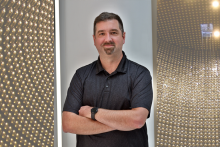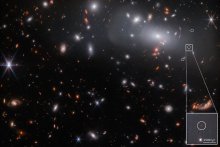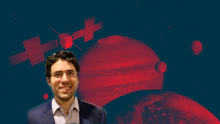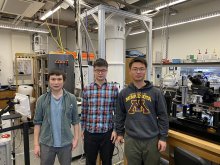News Archive

Moving Target: New Faculty member does neutrino research with a twist
Posted
Professor Michael Wilking is a new faculty member in high energy physics. Wilking’s research is focused on neutrinos and he is a member of several international neutrino collaborations, including DUNE (Deep Underground Neutrino Experiment).

Catching lightning in a bottle: new faculty member studies the physics of transient events
Posted
Ben Margalit is a new faculty member in the School and a theoretical astrophysicist who studies the fundamental physics of star explosions, collisions and other examples of intergalactic violence such as a black hole passing near a galaxy and “shredding it to spaghetti.”

Pribiag group creates new superconducting diode that could improve performance of quantum computers and artificial intelligence
Posted
Professor Vlad Pribiag of the School of Physics and Astronomy led a team that developed a more energy-efficient, tunable superconducting diode—a promising component for future electronic devices—that could help scale up quantum computers for industry and improve artificial intelligence systems.

Kelly leads first-of-its-kind measurement of the Universe’s expansion rate
Posted
Assistant Professor Patrick Kelly of the School of Physics and Astronomy led a team which used a first-of-its-kind technique to measure the expansion rate of the Universe, providing insight that could help more accurately determine the Universe’s age and help physicists and astronomers better understand the cosmos.

Kelly part of group that discovers tiny galaxy with big star power using James Webb telescope
Posted
Using first-of-their-kind observations from the James Webb Space Telescope, a University of Minnesota Twin Cities-led team looked more than 13 billion years into the past to discover a unique, minuscule galaxy that could help astronomers learn more about galaxies that were present shortly after the Big Bang.

Could Jupiter’s icy moons support life? Mission to Jupiter set to launch on April 13
Posted
Assistant Professor Ali Sulaiman of the School of Physics and Astronomy is part of the magnetometer instrument team that will study the icy moons of Jupiter. The European Space Agency’s flagship mission, the Jupiter Icy Moons Explorer (JUICE), will begin its eight-year voyage to the Solar System’s largest planet on April 13.

Student-planned NuSTAR observation reveals hidden light shows on the Sun
Posted
Students at the School played a key role in planning a NuSTAR solar observation which could help shed light on one of the Sun’s biggest mysteries. UMN physics grad students Marianne Peterson and Reed Masek, as well as recent physics Ph.D. recipient Jessie Duncan, under the guidance of Associate Professor Lindsay Glesener, of the School of Physics and Astronomy, all worked on a successful proposal to NASA to use the NuSTAR (Nuclear Spectroscopic Telescope Array)--typically used to view bodies outside the solar system such as massive black holes and collapsed stars-- to observe the Sun. The group is also actively analyzing the data obtained from the observations.

Strobbe gets grant to study machine learning
Posted
Nadja Strobbe, Assistant Professor in the School of Physics and Astronomy will receive $232,000.00 as part of a $4.3 million grant awarded by the Department of Energy to improve machine learning in high energy physics.
University theorists help shed new light on superconductivity in two-dimensional materials
Posted
University of Minnesota Physics Ph.D. student Amartya Saha, working under the guidance of Prof. Turan Birol, from the Chemical Engineering and Materials Science department, and Prof. Rafael Fernandes, from the School of Physics and Astronomy, developed a theoretical model to elucidate the unusual superconducting properties displayed in a two dimensional semiconductor.

Unprecedented control: Wang Group demonstrates precise manipulation of electron waves in a novel graphene microcavity
Posted
Device to focus electrons the same way light can be focused in a laser